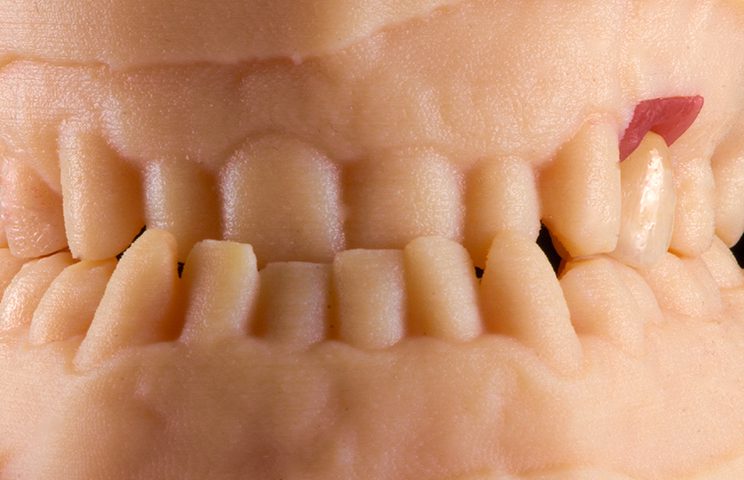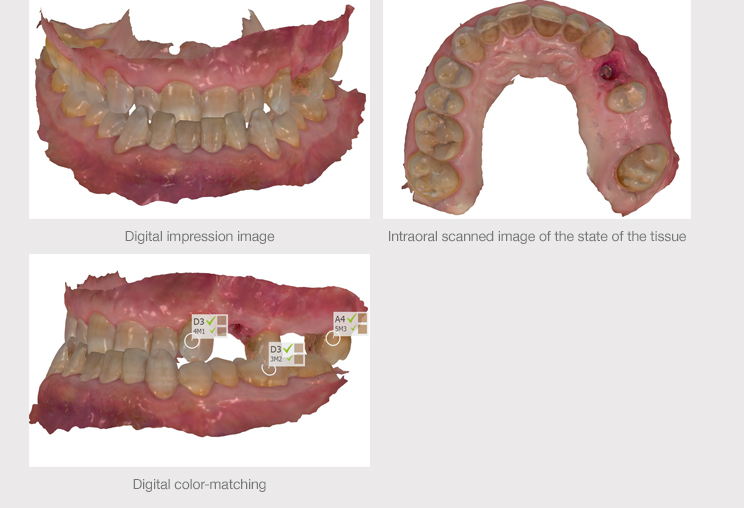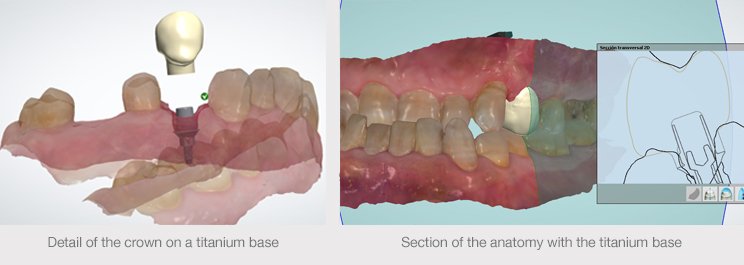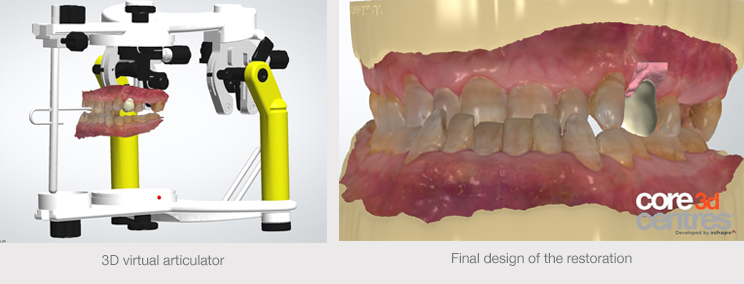

There are next-generation materials that provide great advantages in this type of treatment when combined with an optimal implant system.
These days, dentistry offers many options for restoring pieces using implant-supported fixed prostheses.
There are next-generation materials that provide great advantages in this type of treatment when combined with an optimal implant system.
These materials are ideal for cases with a digital workflow due to their physical properties and the high precision of their forms, which enables optimal customization for the emergence profiles, and easy milling. Altogether, they guarantee maximum reliability in the long term and excellent final results.

Initial situation
Clinical evaluation was conducted on a 60-year-old male patient with no relevant local or systemic pathology who came to the consultation due to a broken tooth. Intraoral examination revealed proper hygiene, a functional Class III malocclusion with anterior crossbite and the fracture of tooth 24.
A treatment plan was created taking the patient’s severe malocclusion into account. This would consist of a milled fixed prosthodontic restoration of the tooth with a highly resistant material for the posterior region.
Procedure
A 4.2×13-mm Avinent Ocean IC implant was inserted post-extraction, achieving a torque of 45 Ncm, suitable for the immediate load of the provisional prosthesis in the same surgical operation. The crown occlusion was adjusted, an essential step in these kinds of cases.
After three months, we checked on the state of the implant. We observed proper osseointegration and digital impressions were taken with a Trios (3Shape) intraoral scanner to design the final prosthesis.

The most frequent causes of the early failure of implants in relation to the prosthesis are non-passive structures and bone overload. Elastic materials absorb masticatory forces and are deformed when subjected to load. More rigid materials like zirconium dioxide lack this ability, however, and the forces impinging upon them are transmitted directly to the peri-implant bone. Severe overload can lead to bone fractures, bone resorption and technical complications.
The use of elastic restoration materials in cases where minimizing the occlusal load is necessary may reduce these risks, especially in patients with parafunctions. Therefore, in this case we thought it was a good idea to restore the implant directly with a stable kind of material that would help to reduce the occlusal load and ensure a good long-term result. We used Enamic (Vita) hybrid ceramic on a titanium interface (Avinent), a simple and quick solution with technical features ideal for satisfactory results in the described case.
We digitally designed a monolithic hybrid ceramic crown on an Avinent IC 0.8 GH titanium interface to establish a good connection, providing greater precision and fit to the restoration. The design of the emergence of the titanium base helped to preserve the soft tissue and obtain a good emergence profile.



During the preparation and design of all CAD-CAM materials, the specific requirements of the material and the technical characteristics of the process must be taken into account.
This material is ideal for use in cases of digital flow due to the easy milling and high precision of its forms, enabling optimal customization of the emergence profile and of the contour of the crown on the titanium base.
CAD design has a very notable advantage, as it saves a lot of space and time by digitally storing the models of the patient’s mouth and the designs of the restorations. This prevents the accumulation of models at the clinic and, if necessary, makes it possible to have a new restoration ready in record time.

Once the crown was milled, we had to carefully and accurately prepare the surfaces to achieve a secure and durable adhesive bond between the crown and the titanium base.

The ease in finishing and polishing the material enabled us to achieve a natural chromatic interplay thanks to its good conductivity of light and the perfect integration of the restoration. This material may be touched up intraorally in case of chipping, providing a quick and easy solution for dentists and patients alike.




Conclusion
Vita Enamic IS is an optimal and versatile solution for use in the restoration of implant-supported monolithic crowns because of its technical and aesthetic advantages.
This type of ceramic hybrid presents shock-absorbing behavior compared to other types of commonly used materials, reducing the forces transmitted to the peri-implant bone and ensuring a good long-term result for the implant and the restoration.
Due to its elastic modulus similar to that of dentine and its response to abrasion and wear resembling that of natural dental enamel, it is a recommended solution for restorations of teeth subjected to a high masticatory load or critical indications like in patients with functional disorders, as in this case.